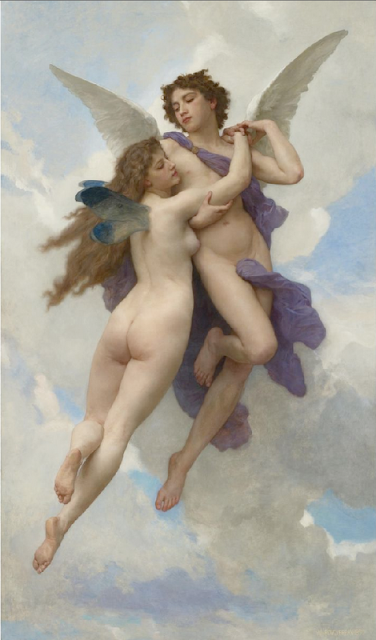
vineri, 23 iulie 2010
joi, 22 iulie 2010
miercuri, 21 iulie 2010
luni, 19 iulie 2010
sâmbătă, 17 iulie 2010
vineri, 16 iulie 2010
For Mona
Simonetta Vespucci (1453-1476), “la bella Simonetta”, was the most beautiful woman in Florence, Italy in her day. She was so beautiful that men were still painting her more than 20 years after her death. She is the woman you keep seeing over and over again in Botticelli’s paintings, like the “Birth of Venus”.
Botticelli painted her as the Virgin Mary, Venus and Athena.
She was born in either Genoa or Portovenere, the place where they say Venus arrived in Italy, and was the daughter of a local aristocrat, Gaspare Cattaneo, and from an early age was celebrated for her unusual loveliness.
She had brown eyes, white skin and long, flowing dark yellow hair. She had what in those days was considered to be a perfect figure.
In Botticelli’s paintings she looks a bit sad, but also like she is in a dream.
At the age of fifteen she married a cousin of the famous Amerigo Vespucci, after whom America is named, Marco Vespucci, and was whisked away by him to live in Florence, then at the height of the Renaissance, the city ruled by the Medicis.Because her father-in-law was an important man there, the Medicis soon came to know her.
Simonetta’s looks and gentle, sweet nature soon made her the centre of attention in her new city and she was feted and stared at wherever she went.
In 1475 she attracted the attention of two Medici brothers, Lorenzo and Giuliano. Lorenzo the Magnificent read her look differently: that she was not just beautiful on the outside but had a beautiful soul too: she was serious, never had an unjust feeling, was not proud or stuck on herself and had an excellent mind. She walked and danced with grace, a sign of the inner balance of her soul.
She was the perfect Renaissance woman.
Lorenzo was too busy with affairs of state, but Giuliano pursued her.
At the La Giostra games in 1475 Giuliano rode into battle under a flag with her picture on it and the French words “La Sans Pareille” – the woman without parallel. Botticelli had made that flag. At the games she was named the “Queen of Beauty”.
Some say that Giuliano won her heart that day and they became lovers. Others say that she refused him.
Giuliano de Medici was not her only conquest at this time. The artist Sandro Botticelli was also smitten and used her as the inspiration of many of his finest and most lovely works including not just The Birth of Venus but also his Primavera and many of his Madonnas. They may not have been directly modelled upon Simonetta but her swanlike neck, fine features, downcast amber eyes and thick corn coloured hair are distinctive.
Sadly, Simonetta’s triumph in Florence was short lived. A year later, at the age of 23, she became very sick and was coughing up blood: she had tuberculosis.
There is a strange story that Giuliano tried to keep her alive as a vampire: better that than to see her die. In that story she becomes a vampire and hides in the tower overlooking the main square. When she is cornered she jumps to her death.
Anyway, she died during the night of 26th and 27th April 1476. At her funeral thousands followed her body to its grave, to its final resting place in the Church of Ognissanti.
Anyway, she died during the night of 26th and 27th April 1476. At her funeral thousands followed her body to its grave, to its final resting place in the Church of Ognissanti.
It seems that Botticelli had fallen in love with her too: after he first saw her, she was the only woman he ever painted, even after her death.Botticelli continued to paint her likeness throughout his long career. He never married and requested that his remains be buried at her feet when he finally died, which they duly were in 1510, thirty four years after she herself had been laid to rest. -
- ( ‘I would never forget what I was doing when they came to tell me that Simonetta, my Simonetta, was dead…‘)
by Maria.A.M
joi, 15 iulie 2010
miercuri, 14 iulie 2010
marți, 13 iulie 2010
luni, 12 iulie 2010
duminică, 11 iulie 2010
sâmbătă, 10 iulie 2010
vineri, 9 iulie 2010
marți, 6 iulie 2010
duminică, 4 iulie 2010
Abonați-vă la:
Postări (Atom)





.jpg)













_-_Charity_(1878).jpg)




















































